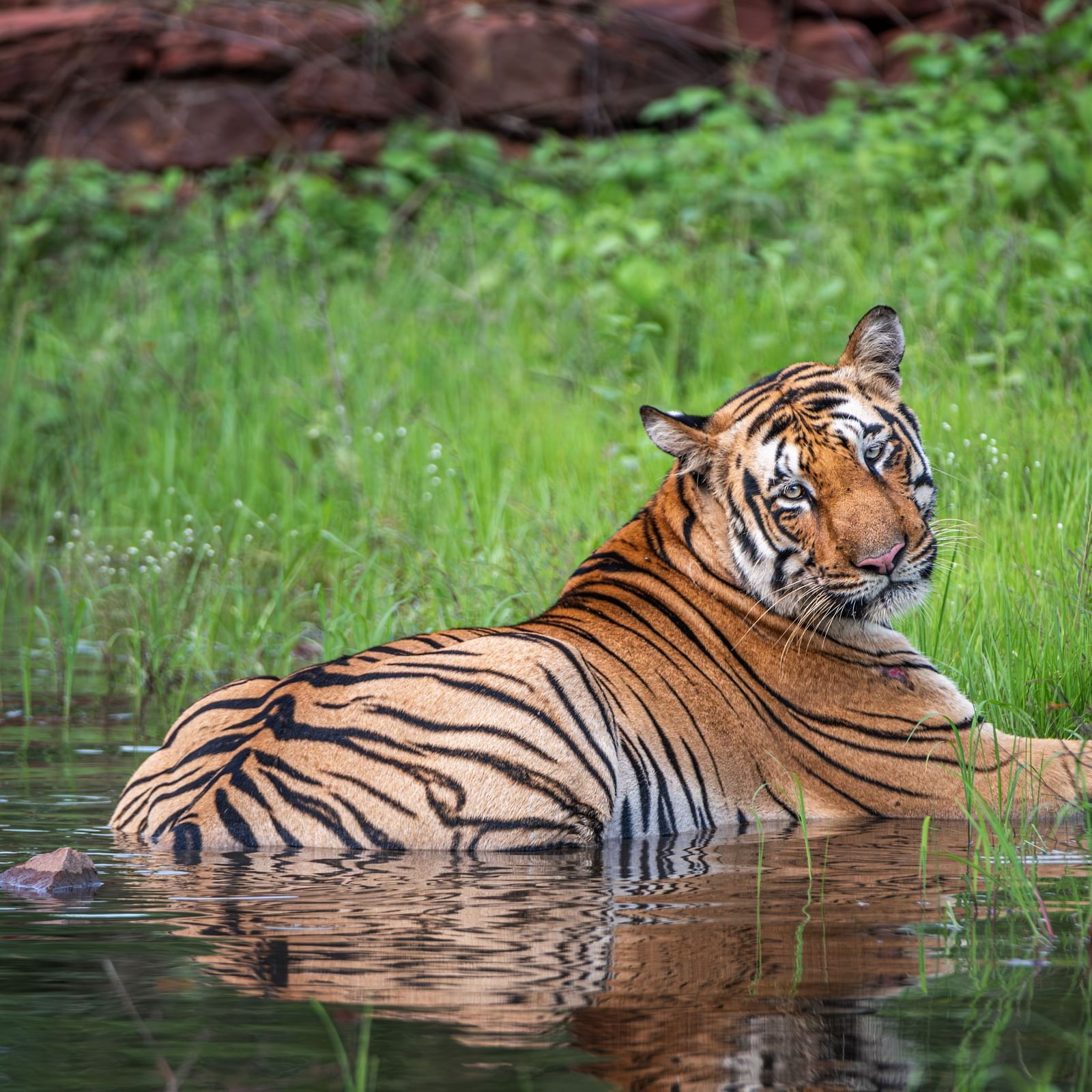Home > Kanha Tiger Reserve

Kanha Tiger Reserve: A Tapestry of Biodiversity and Conservation
A prime tiger habitat, the jungles of Kanha have enjoyed protected status since 1879. The park was among the first national parks declared in 1955 and, subsequently, in the first set of Tiger Reserves declared in 1973. This dense jungle, spreading over 2000 km square, is one of the largest tiger reserves in the country.
The region is known for some of the ancient tribal communities, like the Gond and Baiga, that still inhabit the region. Glimpses of their evolved and highly sustainable lifestyle can still be witnessed in small hamlets peppered on the outskirts of the reserve. Kanha is a frontrunner in fine conservation practices and sustainable tourism initiatives. Most noteworthy among them has been the return of the hard-ground swamp deer, the Barasingha, from the brink of extinction.

Verdant Valleys and Majestic Wildlife: The Enchantment of Kanha Tiger Reserve"
Located on the Maikal Hills of the Satpura Range, Kanha boasts hills and valleys adding to the mystique of the region. 850 species of trees, plants and grasses dominated by the stately towering Sal trees are recorded in the park. The vast grassy meadows support a healthy herbivore population. The most eye-catching among these grasses is the Saccharum spontaenum locally called Kans. This tall grass with white flowers is among the favourites of the Barasingha, feeding on grasses only. It is a mixed deciduous forest, however, on account of the heavy rainfall each monsoon and the Sal trees, it appears green year round.

The state of Madhya Pradesh is both a Tiger & a leopard state of the country and both these predators are found in healthy numbers here. The mascot of Kanha however, is the Barasingha – the hard-ground swamp deer with males sporting 12 or more tines on their antlers.
Langurs, Sambar, spotted deer, Gaur- the largest cattle in the world, barking deer, jackals and wild pigs are some of the commonly seen animals here. The park also has Sloth bears, Ruddy mongoose, Indian pangolins, Giant squirrels, foxes, porcupines, hyenas, jungle cats, hare, monkeys, mongoose, python and many more. The thick foliage, grasslands, bamboo thickets and various water bodies support birds of varied habitat. Over 300 bird species can be seen here, with winter months hosting the migratory birds all the way from Central Asia.